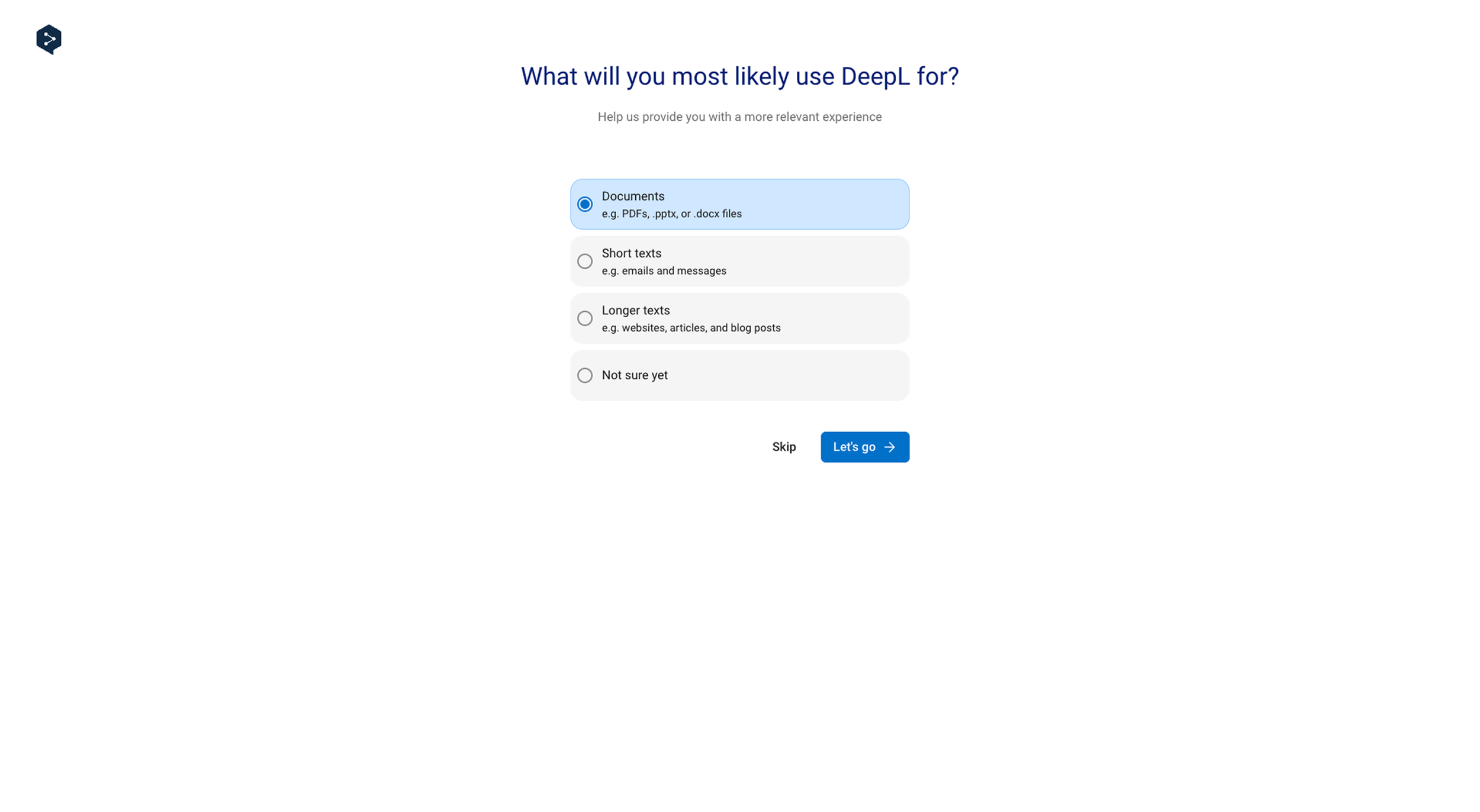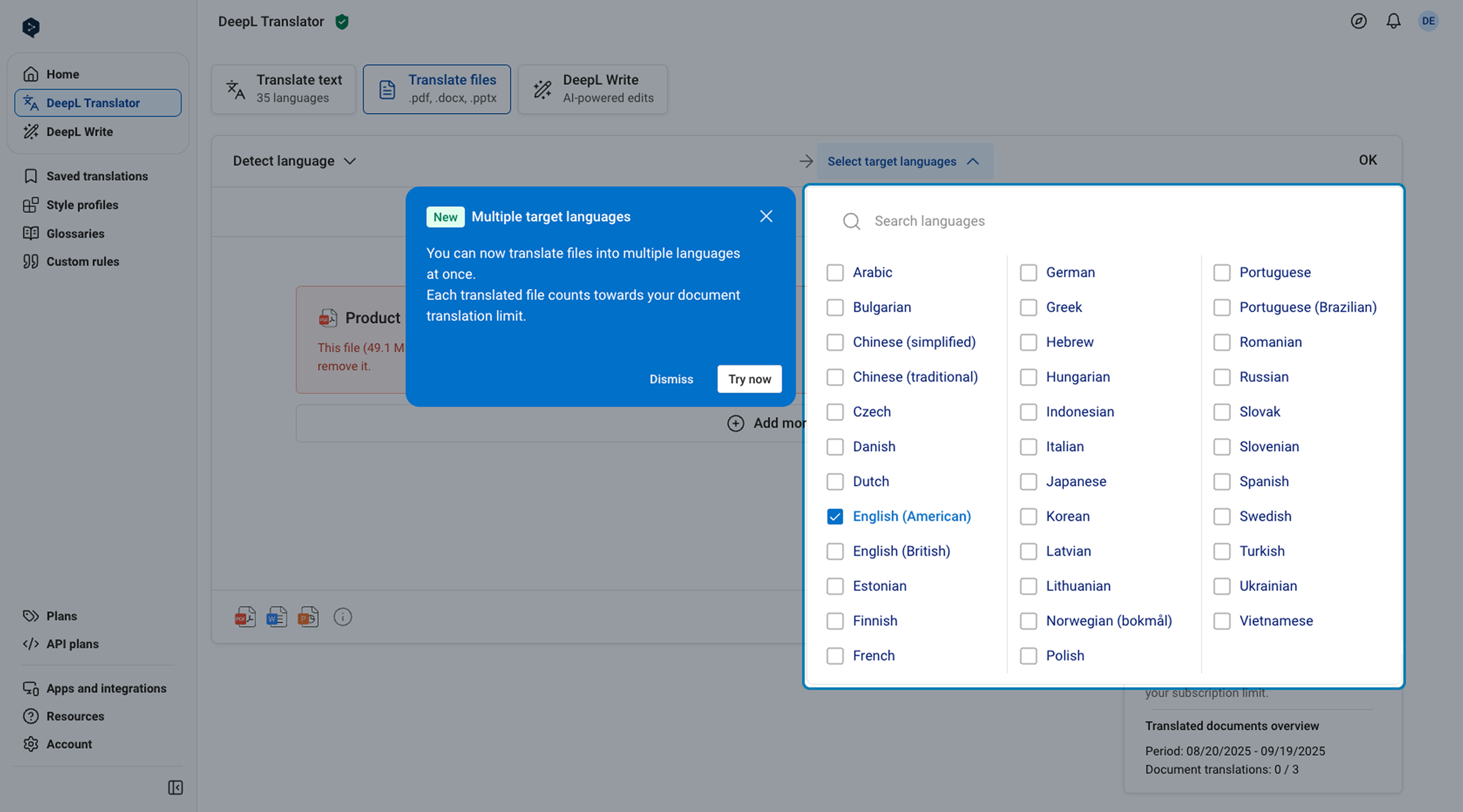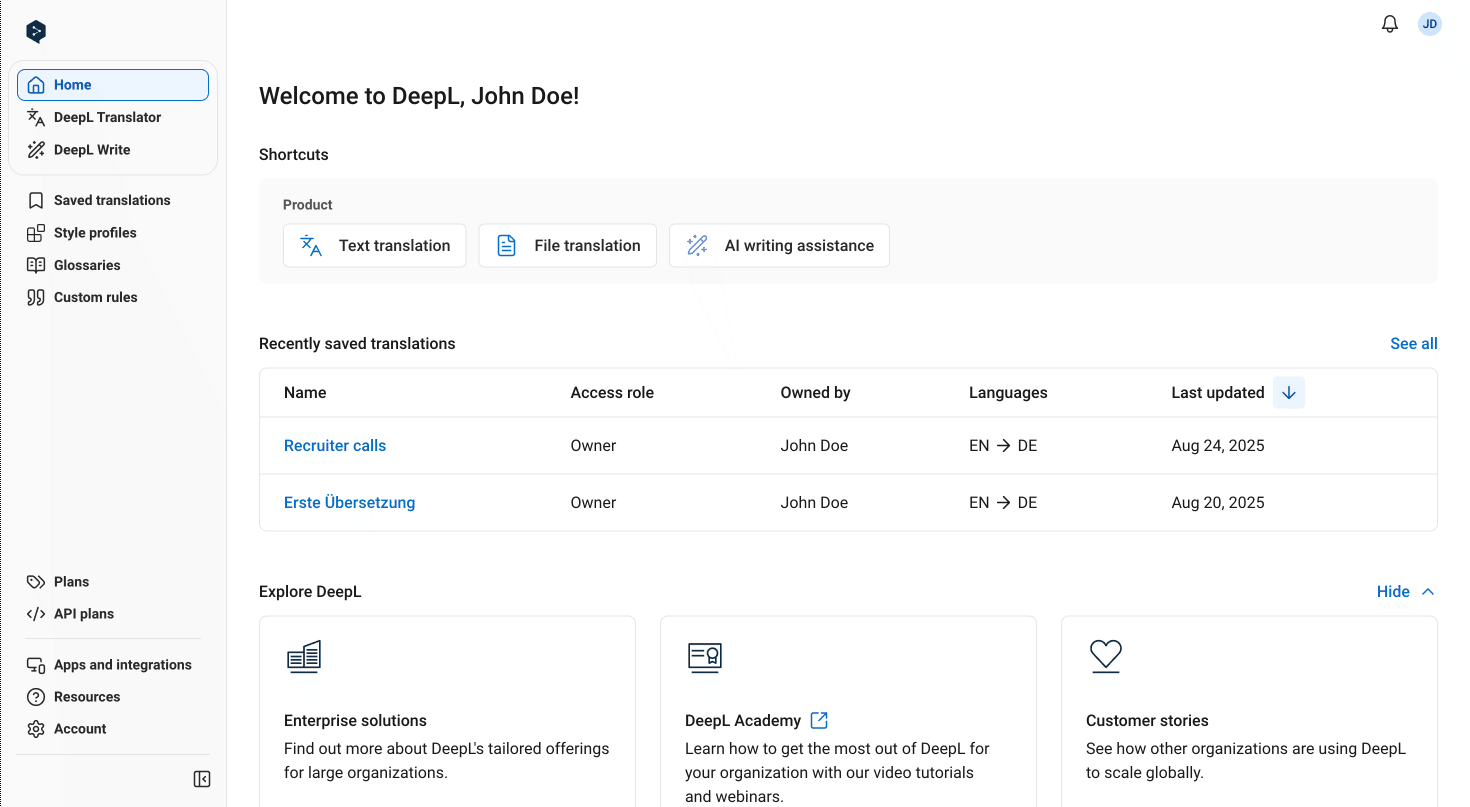DeepL
Fostering connection with language AI

DeepL is an AI-powered translation service that lets you translate in 30+ languages with millions of users worldwide. It delivers accurate translations for documents, images, speech, and text. I was responsible for product design as part of a product trio in the acquisition and onboarding team, where I led the design and collaborated with engineers, product management and the product teams.
My Roles
User Research
Product Strategy
User Experience Design
User Interface Design
Experiment Design
Company
DeepL
Year
2023 - 2024
Problem
DeepL Translator is a very simple product - it´s basically two text boxes and some Machine Learning “magic” in the background. But it also offers a set of advanced features for pro users that are not easy to discover. Additionally there are also new products released that people might want to know about because they can improve their workflows.
We identified these main issues:
Unlocking DeepL’s Hidden Features
Cluttered Information Architecture
People felt overwhelmed by descriptions and unclear categorizations.
Low engagement with advanced features
Many people were not able to discover certain features and if they did, they were uncertain what they would do and how to benefit from them.
Inefficient workflows
People had a hard time switching between different products and complained about the workflows.
Translator product and main website navigation before improvements
Solution
Building a clearer path
We hypothesized that for improving these issues we would run the following initiatives as experiments:
Tailored in-product onboarding flows and email sequences for pro audiences to make feature discovery easy and effortless
A new website information architecture and navigation
A new “home” for DeepL and a new product navigation
I will give a very brief insight into these three initiates that we tackled in the following.
Navigation
Not a new AI, but a new IA
Based on analytics data about user behaviour from Metabase and extensive card sorting tests with larger groups of users we created a new information architecture that became the foundation for the new navigation. Our goals were to create a navigation that:
makes discovery of new products, features and relevant helpful content easy and effortless
is customized to where people are in their journey and only show them relevant content
allows to scale with the growth of DeepL in releasing new products and features in short time frames
Main navigation before
Main navigation improved
Onboarding
Guiding without interrupting
We discussed a lot about how much onboarding is needed and necessary, as DeepL is in this beautiful spot of being a very simple tool. We wanted to make sure to keep that and not to disturb that unique moment of getting immediate value from a translation, especially for first time users. We came to the conclusion that there was an opportunity for a set of experiments.
The main initiative was a short flow to tailor the onboarding for pro audiences to the people´s intent and show them an overview of relevant features and apps. Additionally we experimented with in-context elements that would only show when we can assume relevancy.
Home & Product Navigation
A new home for DeepL
The design team at DeepL had started an initiative to improve the product significantly. The goal was to introduce a new “home” for the product to ensure the scalability of the product. A design prototype was created and tested with users. After engineering and management were convinced, the project was handed over to me and my team to align with all involved teams (which was basically every team) and their product roadmaps and redesign the product accordingly.
It was a great effort to balance the novelty of the new design and navigation paradigm with what teams had on their roadmaps, but we managed to lay a good foundation and structure for every team to build on in the future.






